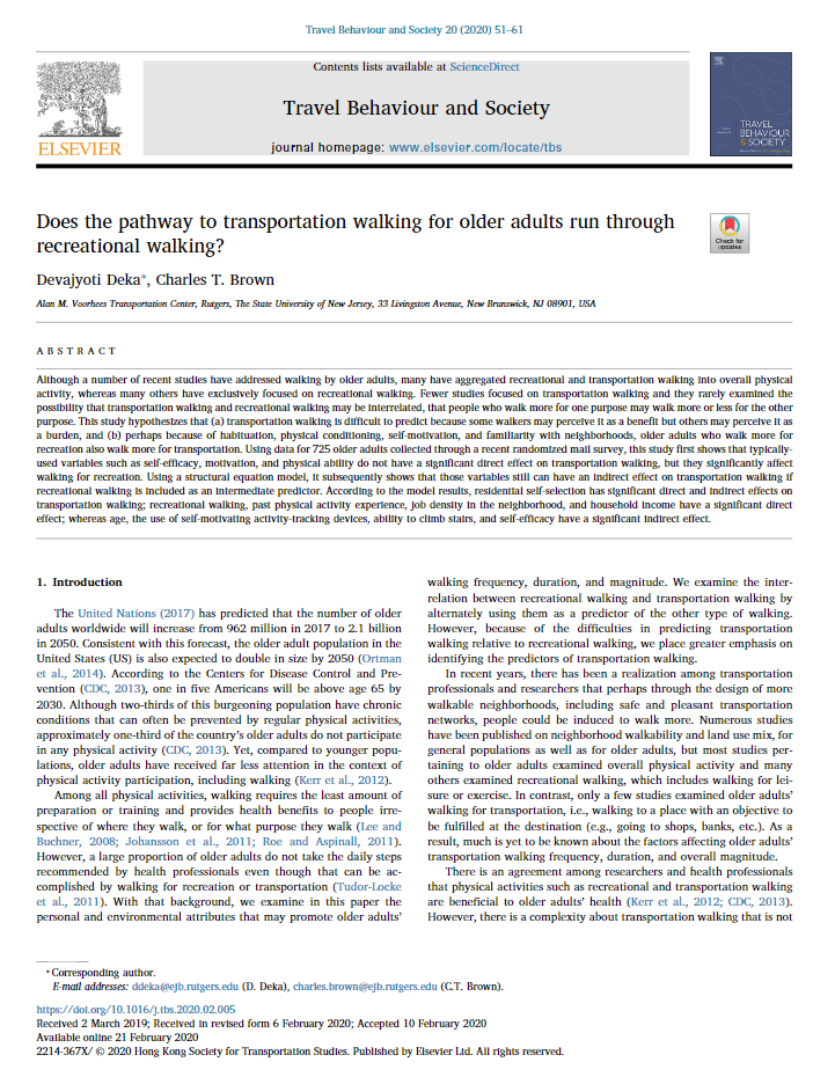Abstract
Although a number of recent studies have addressed walking by older adults, many have aggregated recreational and transportation walking into overall physical activity, whereas many others have exclusively focused on recreational walking. Fewer studies focused on transportation walking and they rarely examined the possibility that transportation walking and recreational walking may be interrelated, that people who walk more for one purpose may walk more or less for the other purpose. This study hypothesizes that (a) transportation walking is difficult to predict because some walkers may perceive it as a benefit but others may perceive it as a burden, and (b) perhaps because of habituation, physical conditioning, self-motivation, and familiarity with neighborhoods, older adults who walk more for recreation also walk more for transportation. Using data for 725 older adults collected through a recent randomized mail survey, this study first shows that typically-used variables such as self-efficacy, motivation, and physical ability do not have a significant direct effect on transportation walking, but they significantly affect walking for recreation. Using a structural equation model, it subsequently shows that those variables still can have an indirect effect on transportation walking if recreational walking is included as an intermediate predictor. According to the model results, residential self-selection has significant direct and indirect effects on transportation walking; recreational walking, past physical activity experience, job density in the neighborhood, and household income have a significant direct effect; whereas age, the use of self-motivating activity-tracking devices, ability to climb stairs, and self-efficacy have a significant indirect effect.
